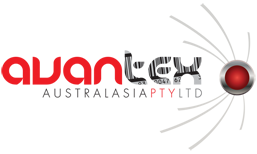If you lost mobile or internet service in July, you’re not alone
Millions of subscribers found themselves without mobile and internet service starting July 8th, with some not having service restored before the weekend’s end. The cause? A massive network system failure related to a maintenance update in a provider’s core network. And while the loss of customers’ subscribed services is bad enough, the outage impacted places you may not have expected – with devastating consequences.
This outage was not the first of its kind, either. Canadians experienced a similar service outage in April 2021. What’s more, the overwhelming majority of the time spent resolving a problem is focused on determining what caused the outage.
While these outages were very public, significant incidents in large organizations are more common than you might think, with almost one-third of data centre owners or operators reporting a downtime incident or severe service degradation over the previous year*.
So, what can be done to prevent this kind of outage – and quickly and efficiently get services back up and running when outages do occur?
The first action organizations need to take is to stop the issue from happening in the first place. In cases where the outage cost more than one million dollars, 74% of data centre owners or operators responding to a 2019 study* said their most recent significant downtime incident could have been prevented with better management/processes or configuration. Second, when an incident does occur, those same management/processes will ensure resolution time is far quicker.
With many changes happening early in the morning or late at night, human error is often even harder to resolve as most staff are not working. However, data centre owners and operators who use the BGIS Cormant DCIM solution have access to complete data to make better, more informed decisions when planning, and then confirming those changes in real-time using mobile device scanning. With great data, human error and the incidents they cause can be significantly reduced.
When an error has occurred, the responsive BGIS Cormant DCIM solution can be the difference between a brief lapse in service for a small fraction of subscribers and users, or a nation-wide or even international catastrophe that grinds business operations and vital public services to a halt for hours – or even days. Discovering the source of the problem is a slow process when done manually; often, a large part is physically finding the device. With BGIS DCIM, the faulty device will be found in seconds – not hours. Part of the BGIS Cormant DCIM solution is a data-rich mobile solution that tracks and manages the data centre’s elements, identifies assets needing attention, and reports the requirements necessary to repair it.
Paul Goodison, VP of Technology Infrastructure Solutions for BGIS, emphasizes the need for IT Infrastructure Management in both the public and private Canadian sectors. “With customers across many federal and local governmental, education, and private sector organisations, we know BGIS Cormant solutions ensure those organisations provide a more reliable and resilient services to their customers by avoiding problems in the first place.”
BGIS is the developer of Cormant-CS, a complete DCIM solution with almost 20 years of experience in the Canadian market. The Cormant-CS provides real-time infrastructure data that is used to increase efficiency and reduce downtime. With the automated system alerting, real-time change management and documentation, along with continuous reporting means that the physical environment is constantly tracked.
Ease of use, unmatched reliability and endless integration options are why BGIS Cormant is the world’s best DCIM solution and the leading ITIM and DCIM solution since 2003. With a single global view of the physical data centre environment, including every connection, device, rack, and room all on an easy-to-manage dashboard, Cormant-CS allows for easier oversight for quickly identifying and resolving issues – something no network monitoring solution offers.
Click here to contact us or speak to your usual Avantex for a consultation on how Avantex and BGIS will help your organization improve resilience and redundancy in your data centres and enterprise networks.
* Uptime Institute, September 23, 2019: “How to avoid outages: Try harder!”






